-
 Bitcoin
Bitcoin $105,734.0170
-1.51% -
 Ethereum
Ethereum $2,414.7328
-3.26% -
 Tether USDt
Tether USDt $1.0002
0.00% -
 XRP
XRP $2.1748
-2.62% -
 BNB
BNB $647.5663
-1.72% -
 Solana
Solana $148.1710
-3.81% -
 USDC
USDC $0.9999
-0.01% -
 TRON
TRON $0.2799
-0.02% -
 Dogecoin
Dogecoin $0.1586
-4.17% -
 Cardano
Cardano $0.5440
-5.03% -
 Hyperliquid
Hyperliquid $37.0680
-6.59% -
 Bitcoin Cash
Bitcoin Cash $501.2052
-4.01% -
 Sui
Sui $2.6846
-3.47% -
 Chainlink
Chainlink $12.8488
-3.38% -
 UNUS SED LEO
UNUS SED LEO $8.9480
-1.51% -
 Avalanche
Avalanche $17.2059
-3.87% -
 Stellar
Stellar $0.2270
-4.75% -
 Toncoin
Toncoin $2.7889
-3.93% -
 Shiba Inu
Shiba Inu $0.0...01126
-1.76% -
 Litecoin
Litecoin $83.6893
-3.36% -
 Hedera
Hedera $0.1445
-4.49% -
 Monero
Monero $312.4014
-2.58% -
 Dai
Dai $1.0000
0.00% -
 Ethena USDe
Ethena USDe $1.0001
-0.01% -
 Polkadot
Polkadot $3.2920
-3.32% -
 Bitget Token
Bitget Token $4.4629
-1.81% -
 Uniswap
Uniswap $6.5386
-8.42% -
 Aave
Aave $260.3780
-6.01% -
 Pepe
Pepe $0.0...09308
-4.54% -
 Pi
Pi $0.4864
-3.04%
Is it true that the gap left by the gap-up opening must be filled?
A gap-up in crypto occurs when an asset opens significantly higher than its previous close, often due to news or sentiment shifts, though unlike traditional markets, these gaps don't always get filled.
Jul 01, 2025 at 11:00 pm
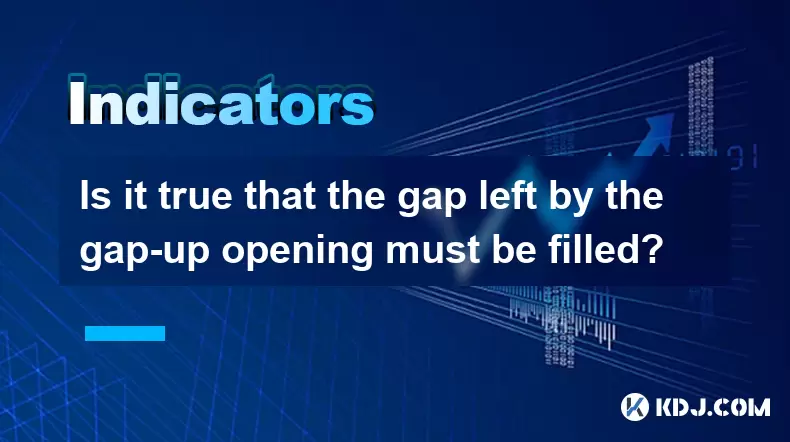
Understanding the Concept of a Gap-Up Opening
In the context of cryptocurrency trading, a gap-up opening occurs when the price of an asset starts significantly higher than the previous day's closing price. This phenomenon typically results from market sentiment shifts, news events, or large buy orders placed overnight. In traditional markets, it is often said that "gaps must be filled," implying that prices will eventually return to the level before the gap occurred.
However, in the highly volatile and decentralized environment of cryptocurrencies, this assumption may not always hold true. The phrase "gap must be filled" originates from technical analysis principles applied in conventional financial markets, where gaps are often closed due to institutional behavior and liquidity considerations. But in crypto markets, which operate 24/7 and are heavily influenced by social media and macroeconomic factors, the dynamics can differ significantly.
What Does It Mean for a Gap to Be 'Filled'?
When traders refer to a gap being filled, they mean that the price has retraced back to the point before the gap occurred. For example, if Bitcoin closed at $30,000 on Monday and opened at $31,000 on Tuesday, a gap-up of $1,000 would occur. If the price later drops to $30,000 during Tuesday’s trading session, then the gap is considered filled.
In traditional stock markets, gaps are often filled because institutional investors take advantage of these discrepancies through arbitrage strategies. However, in the crypto space, such patterns are less predictable due to lower regulation and higher volatility. Therefore, while some gaps do get filled, others remain open indefinitely, especially when strong momentum continues in the direction of the gap.
Factors Influencing Whether a Gap Gets Filled
Several key elements determine whether a gap-up in cryptocurrency will be filled:
- Market Sentiment: Positive news such as regulatory approval or adoption announcements can cause a gap-up that might not close if the sentiment remains bullish.
- Volume: High volume accompanying a gap-up suggests stronger support for the new price level, reducing the likelihood of a fill.
- Timeframe: Gaps observed on daily charts may behave differently compared to those on hourly or weekly charts. Short-term gaps are more likely to be filled than long-term ones.
- Support and Resistance Levels: If the gap-up crosses a major resistance level and holds above it, the chances of a fill decrease.
- Market Manipulation: Due to the relatively low liquidity of many altcoins, large players (whales) can create artificial gaps that may or may not be filled depending on their strategies.
These factors collectively influence whether a gap-up in crypto will see a pullback or continue pushing forward without revisiting the prior price level.
How to Identify and Analyze Gaps in Crypto Charts
To effectively analyze gap-ups in cryptocurrency charts, follow these steps:
- Use Candlestick Charts: Ensure your charting platform displays candlesticks with proper time intervals (daily, 4-hour, etc.).
- Look for Price Discontinuities: A gap appears as a vertical space between two consecutive candles with no overlap.
- Check Volume Indicators: Compare the volume of the gap-up candle with the average volume of the past few sessions. A surge in volume indicates strong conviction behind the move.
- Overlay Key Technical Levels: Use horizontal support/resistance lines or Fibonacci retracement levels to assess the significance of the gap.
- Monitor Order Books and Liquidity Pools: Especially in decentralized exchanges, analyzing order books helps understand potential areas where price could reverse or consolidate.
By combining these tools, traders can better assess the probability of a gap getting filled and adjust their strategies accordingly.
Strategies for Trading Gap-Ups in Cryptocurrencies
Trading gap-ups in crypto requires careful planning and risk management. Here are some actionable strategies:
- Fade the Gap: This involves taking a position opposite to the gap direction, betting that the price will retrace. For instance, shorting after a strong gap-up expecting a pullback.
- Ride the Momentum: Some traders enter long positions after confirming the strength of the gap, aiming to profit from continued upward movement.
- Wait for Confirmation: Observe the first few candles after the gap to see if the price continues in the same direction or starts to reverse before making a decision.
- Set Stop-Loss Orders: Regardless of strategy, always use stop-losses to protect against sudden reversals or whale dumping.
- Combine with Other Indicators: Use moving averages, RSI, or MACD to filter out false signals and improve the accuracy of your trades.
Each approach comes with its own risks and rewards. Understanding the context of the gap-up—whether it’s due to fundamentals, speculation, or manipulation—is crucial for choosing the right strategy.
Common Misconceptions About Gap-Filling in Crypto
One of the most persistent myths in crypto trading is that every gap-up must be filled. While this idea is rooted in traditional markets, it doesn't universally apply to cryptocurrencies. Here are some common misconceptions:
- All Gaps Are Equal: Not all gaps carry the same weight. Common gaps (small, frequent ones) are more likely to be filled than breakout gaps (large moves signaling new trends).
- Price Will Always Return: In fast-moving crypto markets, prices may never look back once a new trend establishes itself post-gap.
- Gaps Can Be Traded Automatically: Blindly trading gaps without understanding the underlying causes can lead to losses. Each situation should be analyzed individually.
- Gap-Filling Is a Guaranteed Strategy: There is no foolproof method in crypto trading. Relying solely on gap-filling as a strategy can be risky without additional confirmation tools.
These misunderstandings can lead to poor decision-making if not properly addressed with research and analysis.
Frequently Asked Questions
Q: Do gap-ups in cryptocurrencies usually get filled faster than in traditional markets?
A: Not necessarily. While traditional markets have more predictable patterns, crypto markets are influenced by global sentiment and real-time information flow, which can either accelerate or delay a gap fill.
Q: Can I rely on gap-filling as a consistent trading strategy in crypto?
A: No single strategy guarantees success in crypto trading. Gap-filling can be part of a broader strategy but should be used alongside other indicators and sound risk management practices.
Q: How can I differentiate between a meaningful gap-up and a false breakout?
A: Look at volume, follow-through price action, and alignment with broader market trends. A genuine gap-up usually sees sustained buying pressure and strong volume, whereas false breakouts often lack these characteristics.
Q: Are there specific cryptocurrencies where gap-ups tend to get filled more often?
A: Generally, larger-cap cryptocurrencies like Bitcoin and Ethereum may exhibit more predictable behavior due to higher liquidity and institutional interest. Smaller altcoins are more prone to erratic movements, making gap behavior less reliable.
Disclaimer:info@kdj.com
The information provided is not trading advice. kdj.com does not assume any responsibility for any investments made based on the information provided in this article. Cryptocurrencies are highly volatile and it is highly recommended that you invest with caution after thorough research!
If you believe that the content used on this website infringes your copyright, please contact us immediately (info@kdj.com) and we will delete it promptly.
- Crypto Trends 2025: MAGACOIN FINANCE Surges, Ethereum Mining Evolves, and XRP Payouts Innovate
- 2025-07-02 10:30:12
- Ethereum, MAGACOIN FINANCE, and Inflation: A Shift in Crypto Investor Focus
- 2025-07-02 10:30:12
- Kangaroos, Coin Purses, and a Hop Through Money History: You Gotta See This!
- 2025-07-02 10:50:15
- Arbitrum, Robinhood, and ARB Price: Is a Rebound on the Horizon?
- 2025-07-02 10:50:15
- Michael Saylor, Bitcoin, and $500 Million: A Winning Strategy?
- 2025-07-02 08:30:12
- Toncoin's Telegram Takeover: Price Predictions and the Power of Utility
- 2025-07-02 09:10:12
Related knowledge
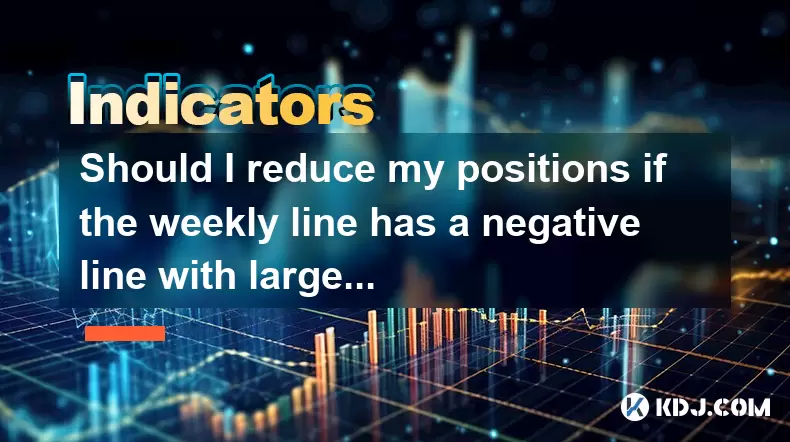
Should I reduce my positions if the weekly line has a negative line with large volume + the daily line falls below the middle Bollinger line?
Jul 01,2025 at 10:50pm
Understanding the Weekly Line with Negative Candle and Large VolumeWhen analyzing cryptocurrency charts, a weekly line that forms a negative candle accompanied by large volume is often interpreted as a strong bearish signal. This pattern suggests that institutional or large traders are actively selling their positions, which can foreshadow further price...
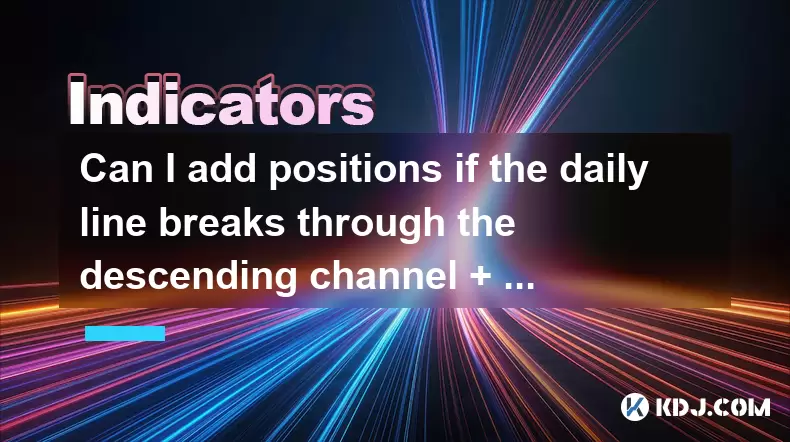
Can I add positions if the daily line breaks through the descending channel + the 30-minute moving average is in a bullish arrangement?
Jun 30,2025 at 11:00pm
Understanding the Descending Channel BreakoutWhen a daily line breaks through a descending channel, it indicates a potential shift in market sentiment from bearish to bullish. A descending channel is formed by drawing two parallel trendlines, where the upper trendline connects the lower highs and the lower trendline connects the lower lows. A breakout o...
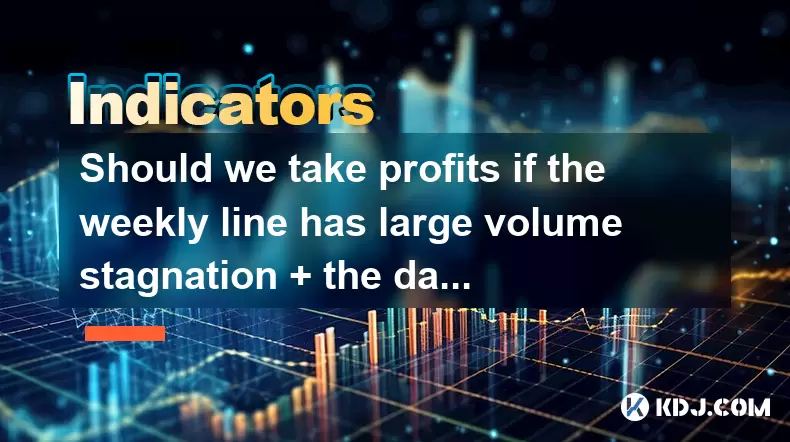
Should we take profits if the weekly line has large volume stagnation + the daily RSI top divergence?
Jul 01,2025 at 05:22pm
Understanding Weekly Volume Stagnation in Cryptocurrency TradingIn cryptocurrency trading, weekly volume stagnation refers to a situation where the total trading volume over a week remains relatively flat or shows no significant increase despite price movements. This phenomenon can indicate that institutional or large traders are not actively participat...
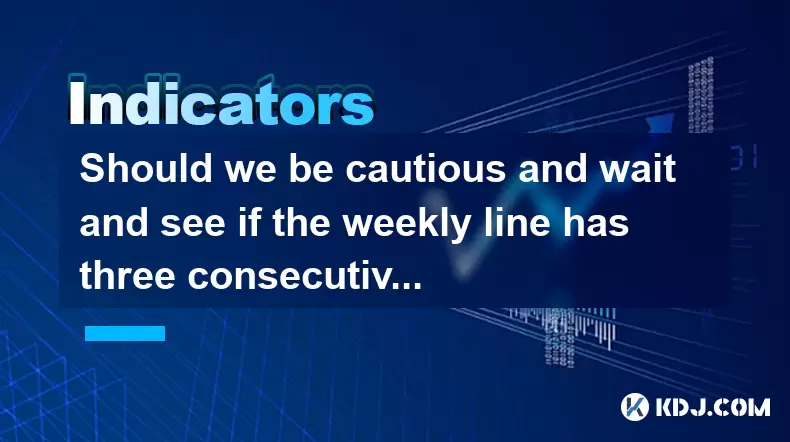
Should we be cautious and wait and see if the weekly line has three consecutive Yin lines + the daily MACD green column enlarges?
Jul 01,2025 at 12:42am
Understanding the Weekly Three Consecutive Yin Lines PatternIn technical analysis, three consecutive Yin lines on a weekly chart indicate a strong bearish trend. Each Yin line represents a week where the closing price is lower than the opening price, signaling consistent selling pressure. When this pattern appears three times in succession, it often sug...
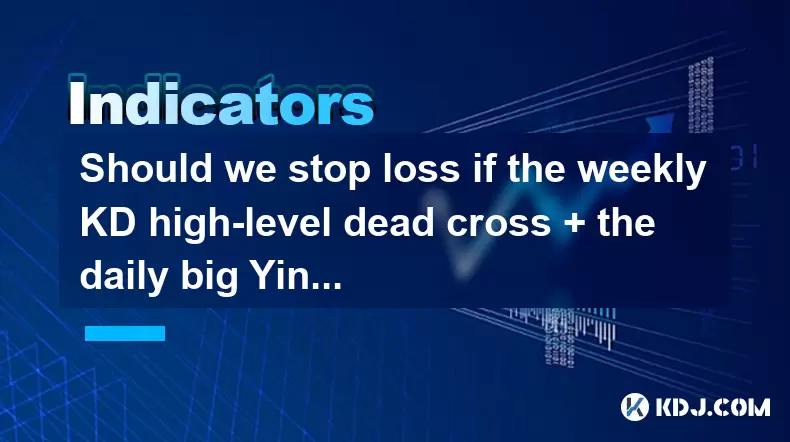
Should we stop loss if the weekly KD high-level dead cross + the daily big Yin line breaks?
Jul 01,2025 at 09:49pm
Understanding the Weekly KD High-Level Dead CrossIn technical analysis, KD (K-D indicator) is a momentum oscillator that helps traders identify overbought or oversold conditions in the market. The weekly KD high-level dead cross occurs when both the K-line and D-line are above 80 (indicating overbought territory), and the K-line crosses below the D-line...
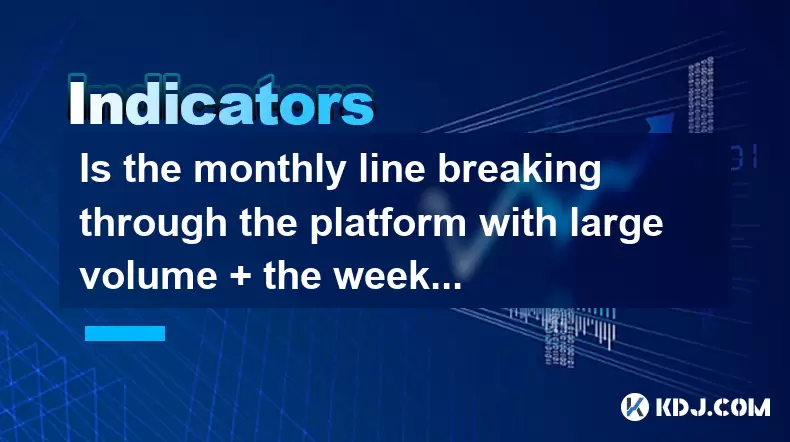
Is the monthly line breaking through the platform with large volume + the weekly moving average converging and then diverging and bullish?
Jul 01,2025 at 05:01pm
Understanding Monthly Line Breakouts in CryptocurrencyIn the world of cryptocurrency trading, monthly line breakouts are significant events that can indicate long-term trends. When a cryptocurrency's price breaks above a key platform or consolidation zone on the monthly chart, especially with large volume, it often signals strong institutional or whale ...

Should I reduce my positions if the weekly line has a negative line with large volume + the daily line falls below the middle Bollinger line?
Jul 01,2025 at 10:50pm
Understanding the Weekly Line with Negative Candle and Large VolumeWhen analyzing cryptocurrency charts, a weekly line that forms a negative candle accompanied by large volume is often interpreted as a strong bearish signal. This pattern suggests that institutional or large traders are actively selling their positions, which can foreshadow further price...

Can I add positions if the daily line breaks through the descending channel + the 30-minute moving average is in a bullish arrangement?
Jun 30,2025 at 11:00pm
Understanding the Descending Channel BreakoutWhen a daily line breaks through a descending channel, it indicates a potential shift in market sentiment from bearish to bullish. A descending channel is formed by drawing two parallel trendlines, where the upper trendline connects the lower highs and the lower trendline connects the lower lows. A breakout o...

Should we take profits if the weekly line has large volume stagnation + the daily RSI top divergence?
Jul 01,2025 at 05:22pm
Understanding Weekly Volume Stagnation in Cryptocurrency TradingIn cryptocurrency trading, weekly volume stagnation refers to a situation where the total trading volume over a week remains relatively flat or shows no significant increase despite price movements. This phenomenon can indicate that institutional or large traders are not actively participat...

Should we be cautious and wait and see if the weekly line has three consecutive Yin lines + the daily MACD green column enlarges?
Jul 01,2025 at 12:42am
Understanding the Weekly Three Consecutive Yin Lines PatternIn technical analysis, three consecutive Yin lines on a weekly chart indicate a strong bearish trend. Each Yin line represents a week where the closing price is lower than the opening price, signaling consistent selling pressure. When this pattern appears three times in succession, it often sug...

Should we stop loss if the weekly KD high-level dead cross + the daily big Yin line breaks?
Jul 01,2025 at 09:49pm
Understanding the Weekly KD High-Level Dead CrossIn technical analysis, KD (K-D indicator) is a momentum oscillator that helps traders identify overbought or oversold conditions in the market. The weekly KD high-level dead cross occurs when both the K-line and D-line are above 80 (indicating overbought territory), and the K-line crosses below the D-line...

Is the monthly line breaking through the platform with large volume + the weekly moving average converging and then diverging and bullish?
Jul 01,2025 at 05:01pm
Understanding Monthly Line Breakouts in CryptocurrencyIn the world of cryptocurrency trading, monthly line breakouts are significant events that can indicate long-term trends. When a cryptocurrency's price breaks above a key platform or consolidation zone on the monthly chart, especially with large volume, it often signals strong institutional or whale ...
See all articles

























































































